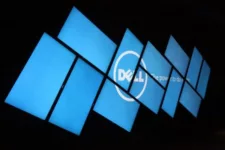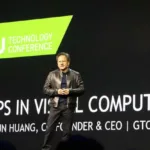Over the last decade we’ve seen one company repeatedly corner a market on personal technology. That company was Apple and they did it using one simple repeatable formula. They came up with a new and unique angle for an existing but underperforming area of consumer technology, then drove demand to their better model forcing other, often larger, competitors to chase them. Well, apparently Dell, VMware, and NVIDIA collectively figured that Personal Computers were underperforming their potential and came up with a new spin on traditional thin clients in order to try to do the same thing with the PC market. I think they’ve got a shot.
Let me explain.
The Problem with Thin Clients
Back in the late 1990s when Oracle and Sun collectively came up with thin client computing (called the Network PC) they had a great idea. What if your PC worked kind of like a radio. You turned it on and it magically just worked and the processing would be right next to the data and remote from the client? That way, you could access it everyplace there was a network and it would remember its previous state so you could break work at work and pick up right where you left off just by logging into the system.
There were three huge flaws though. Networking back in the 1990s was slow and unreliable, and made the cost to implement the solution horrendous. Second there really wasn’t a server that was designed to take this kind of load. The closest was likely a mainframe but neither Oracle nor Sun sold mainframes and mainframes didn’t run Windows, which is what folks tended to run on PCs back then. Finally, neither Oracle nor Sun understood PCs; they just wanted to kill Microsoft. This would be like trying to compete with Toyota aggressively without actually ever driving a car or having anything to do with the automotive business.
The two companies’ Sun Ray One, it was sold as a cost saving system but it cost a huge premium up front, something PC customersd focused on costs couldn’t possibly justify. The end result was so far off the mark that it never came close to threatening Microsoft, let alone taking it out.
However Things Have Changed
In the last decade or so networks, because more and more things are run off the Internet, have become faster and latency (the bigger problem) has mostly been eliminated. NVIDIA created its Grid platform which was designed from the ground up as a server specifically to support graphics for PC types of loads. And the Thin Client Mission now resides at Dell and HP, both of which collectively control the market and have significant PC experience.
However HP has been a bit distracted of late. That’s because of efforts to cut the company back to the bone to assure profitability as revenues declined and because they seemed more interested in spinning the PC and Printer units out than in turning them into something that could corner a market. To suggest HP lacked vision is likely an understatement.
This left Dell and the company stepped right up.
Dell and Tesla’s Model
Dell figured out the one angle that its competitors hadn’t figured out. It wasn’t even a unique model, as first Apple and then Tesla showcased its success first. This is to come in at the top of the market and sell an exclusive product that does something particularly well. In the case of Tesla, the company brought out a premium no compromise electric car appealing to the need to be unique and not focusing on saving money. People that buy Tesla’s can afford gas,. Instead, they are buying exclusivity and a premium experience. These folks are more than willing to pay extra for both.
Dell just released the industry’s First ISV-Certified Workstation Appliance by focusing on workstation users and promising them both higher security and massively higher performance. Ironically, when they started the component costs made the result far more expensive than workstations but firms were willing to pay the extra for the performance and security advantages. But component prices came down quickly and now the system costs are in line with high end workstations in terms of cost and pricing, allowing Dell to use its advantages as a pure differentiator making the result even more attractive.
The result allows collaborating engineers and animators to work on massive files real time (because they remain centralized) put in place systems that prevent illicit copying of files (avoiding the costly problems the Sony breach exposed) and significantly improve overall performance and reliability because centralized systems can more easily be dynamically enhanced for performance and made redundant.
The end result is a solution that showcases the power of the Thin Client, a power that was always there, just unappreciated because the folks that were attempting to sell solutions didn’t understand that they were selling into the wrong side of the market.
Wrapping Up:
Markets turn on unique differentiated ideas. Apple has done this three times to date with the iPod, iPhone, and iPad. Each time the markets for MP3 players, smartphones, and tablets were mature but relatively unexciting. Apple created a premium offering that addressed unique segment problems and funded the result to turn the market to its own advantage.
Here, too, the Dell, NVIDA, and VMware Thin Workstation effort has the same elements. It is launching into a relatively staid PC and workstation market, it has unique and desirable advantages, and while expensive it targets, at least initially, engineers who are more than willing to pay more to get more.
The Dell Workstation Appliance is potentially a game changer combining VMware and NVIDIA technology to create what most users have always wanted, a pure appliance no-compromise solution that uniquely addresses the workstation user’s powerful hunger for performance by putting the processing power right next to the data.
This is the difference between a great idea and amazing execution. Oracle and Sun may have originated the concept but it took three companies that understand PCs and end users that were willing to think differently . The result is something that has the potential to transform the PC market.
Dell’s Workstation Appliance, once it moves down market, has the potential to corner the market for PCs much like Apple cornered the market for MP3 players, smartphones, and tablets, and Tesla cornered the market for luxury electric cars. That’s a lesson well learned.








